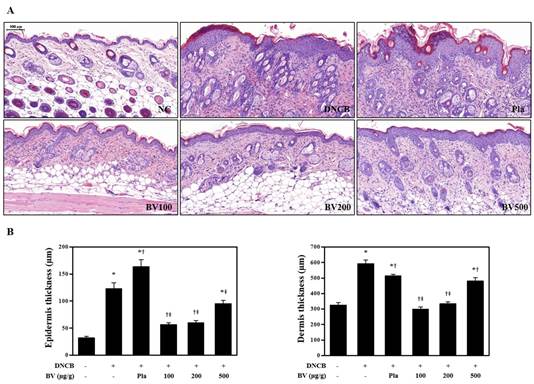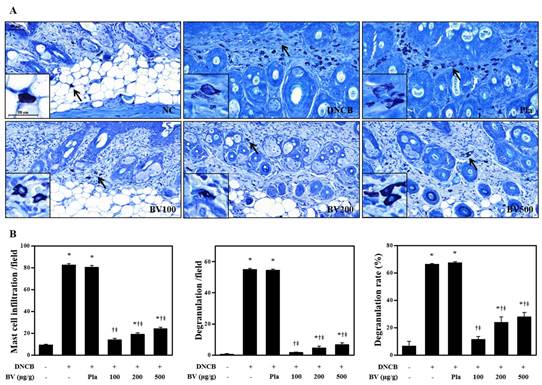


湿疹是一种由多种内外因素引起的瘙痒剧烈的皮肤炎症反应,分为急性、亚急性、慢性三期,其发病原因十分复杂,近年来,人群中湿疹的发病呈上升趋势,这可能与气候环境变化,大量化学制品在生活中的应用,精神紧张,生活节奏加快,饮食结构改变均有关系。
近日,一项刊登在国际杂志British Journal of Pharmacology上题为“Therapeutic effects of bee venom and its major component, melittin, on atopic dermatitis in vivo and in vitro”的研究报告中,来自韩国大邱神学院的研究人员通过研究发现,利用蜂毒或能有效治疗湿疹。
研究者表示,蜂毒及其主要组分蜂毒肽能够作为过敏性皮肤炎(或湿疹)的有效疗法。文章中,研究人员通过对小鼠和人类细胞进行测试,结果发现,蜂毒和蜂毒肽能够通过多种机制抑制机体免疫细胞的炎性反应和炎性分子的水平。
最后Hyun-Jin An说道,本文研究中我们阐明了蜂毒和蜂毒肽具有特殊的免疫调节活性,诸如此类活性常常与机体辅助T细胞分化的调节过程直接相关,这或许能够有效改善因过敏性皮肤炎所有发的炎性皮肤性疾病的症状,当然后期研究人员还需要进行更为深入的研究来测试蜂毒及其蜂毒肽的安全性和有效性,未来研究人员或能基于本文研究开发出治疗湿疹等皮肤疾病的新型疗法。(来源:生物谷Bioon.com)
Therapeutic effects of bee venom and its major component, melittin, on atopic dermatitis in vivo and in vitro
Abstract
Background and purpose Atopic dermatitis (AD) is a multifactorial skin disease with complex interactions of innate and adaptive immune responses based on a genetic, pharmacological, and psychological predisposition. There are several treatment approaches for AD, including topical glucocorticosteroids, emollients, phototherapies, calcineurin inhibitors, and immunosuppressants, such as cyclosporine A. These therapies reduce inflammation, but they also cause various side effects. Therefore, it is necessary to develop new therapeutic approaches for AD treatment without side effects. There are several studies on natural materials or toxins, such as herbs, ginseng extract, and snake venom, for AD treatment. However, bee venom (BV) and melittin (Mel)‐mediated AD treatment has rarely been studied.
Experimental approach The present study was designed to determine the effect of BV and Mel in an AD‐like model. This study investigated the potential pharmacological effects of BV and its major component, Mel, on 1‐Chloro‐2,4‐dinitrobenzene (DNCB)‐induced in vivo and TNF‐α/IFN‐γ‐induced in vitro AD‐like skin disease models.
Key results We found that BV and Mel possess potent anti‐atopic activities, as evidenced by decreased DNCB‐induced AD‐like skin lesions in an animal model. In vitro studies using TNF‐α/IFN‐γ‐stimulated human keratinocytes revealed that BV and Mel inhibited the exaggerated expression of chemokines, such as TARC/CCL17 and MDC/CCL22, and pro‐inflammatory cytokines, including IL‐1β, IL‐6, and IFN‐γ, through the blockade of the NF‐κB and STAT signaling pathways.
Conclusions and implications In conclusion, these results suggest that BV and Mel would be suitable for epicutaneous application, as topical administration is often appropriate for the treatment of AD.
原文链接:https://bpspubs.onlinelibrary.wiley.com/doi/epdf/10.1111/bph.14487



